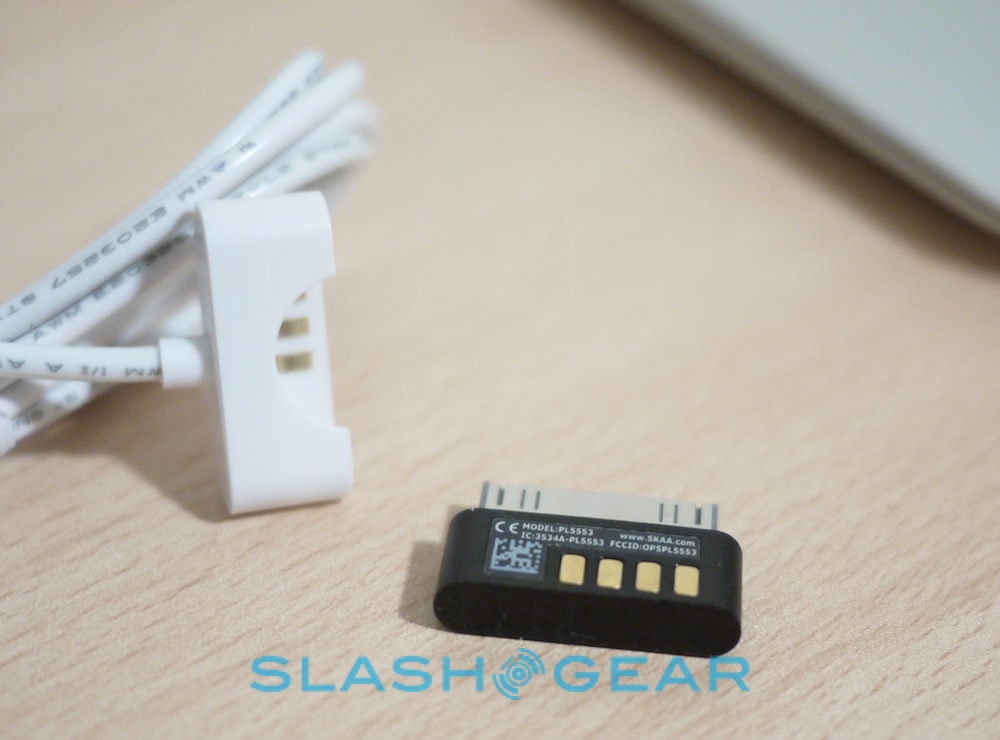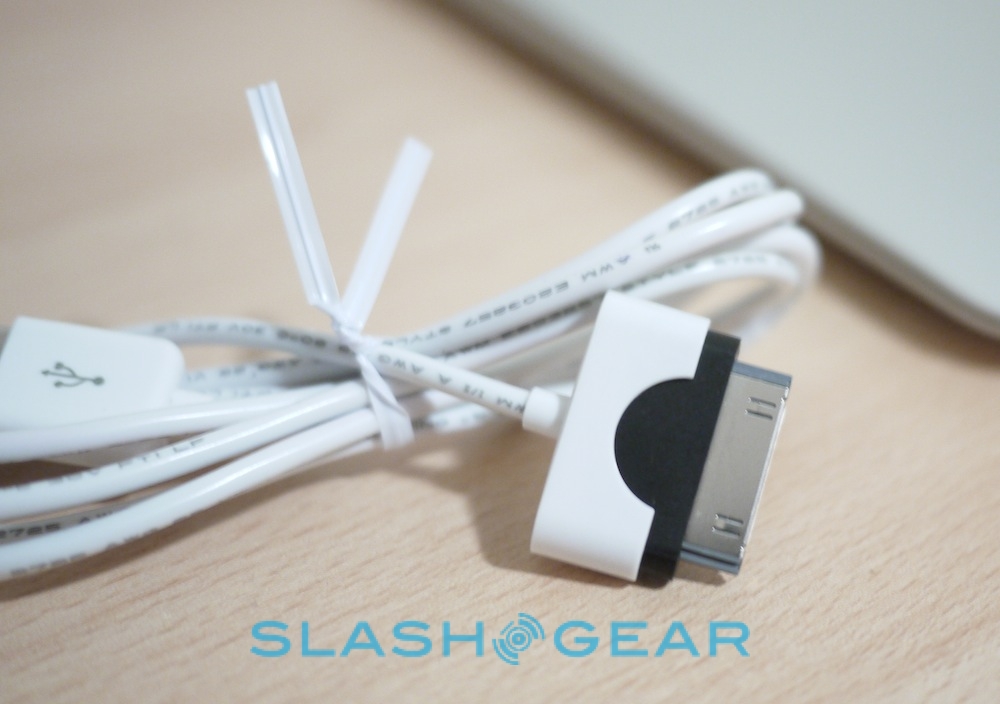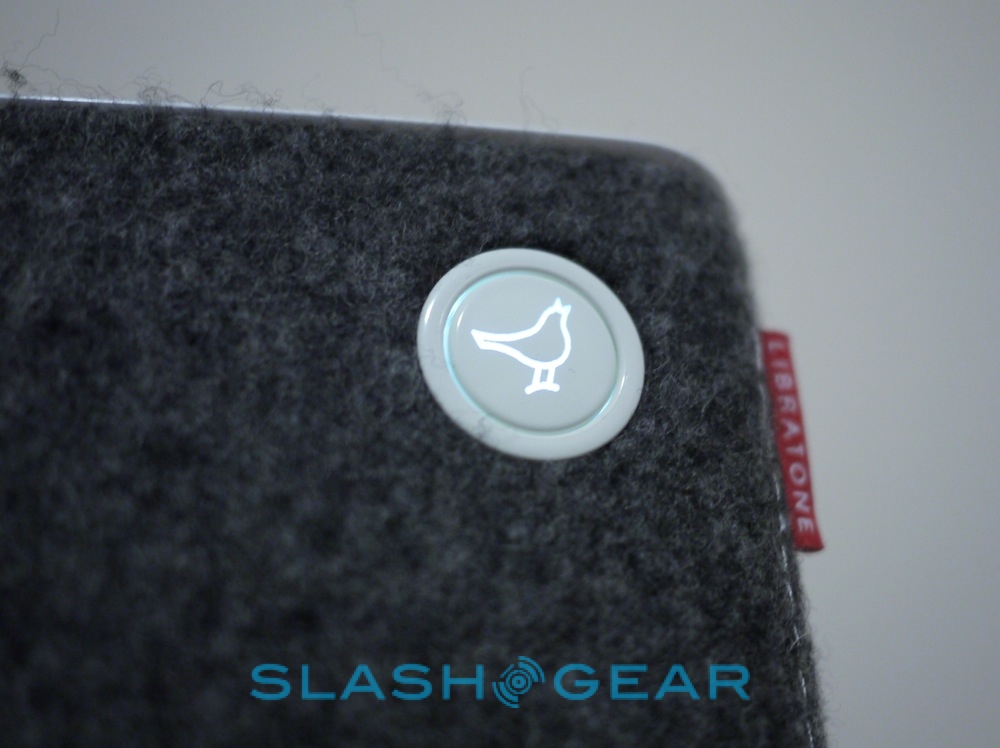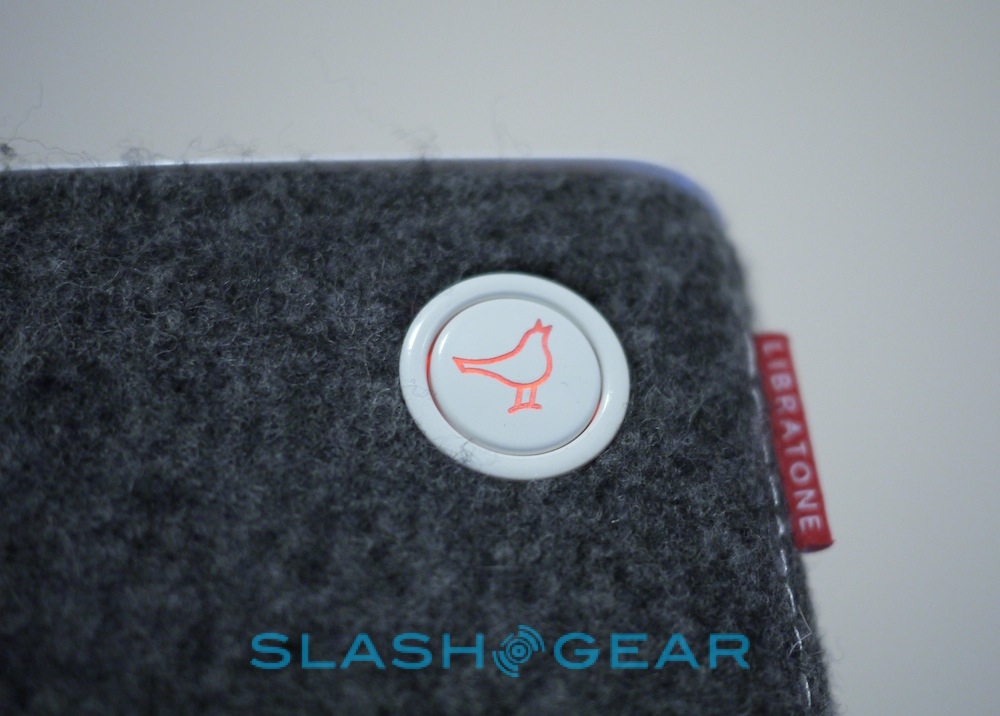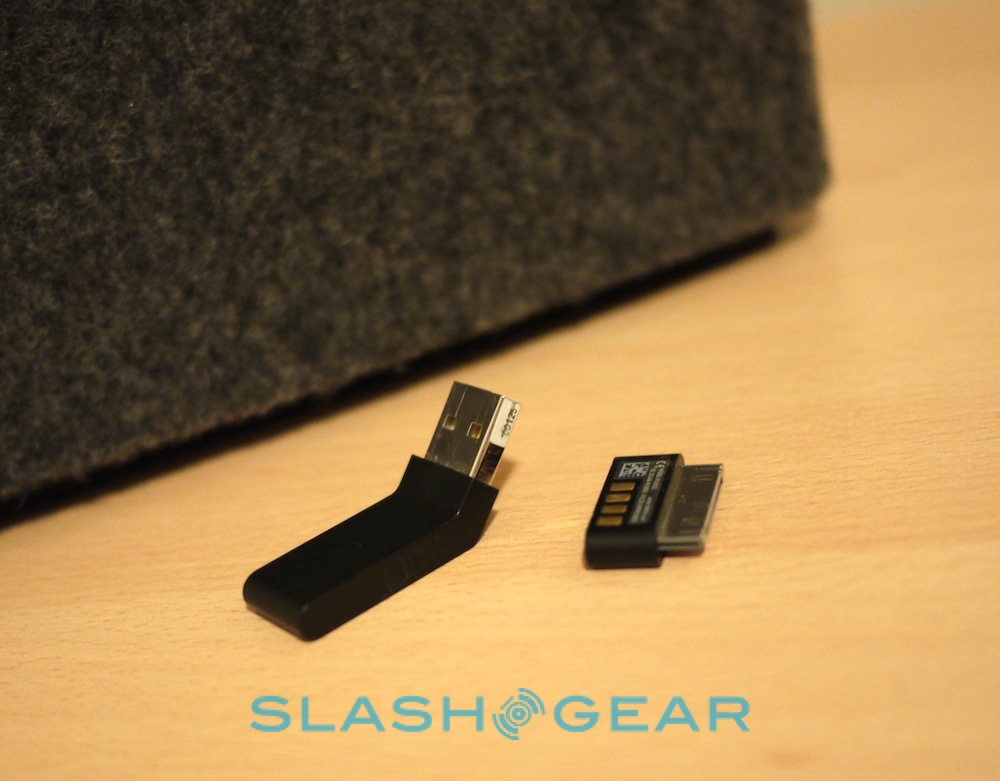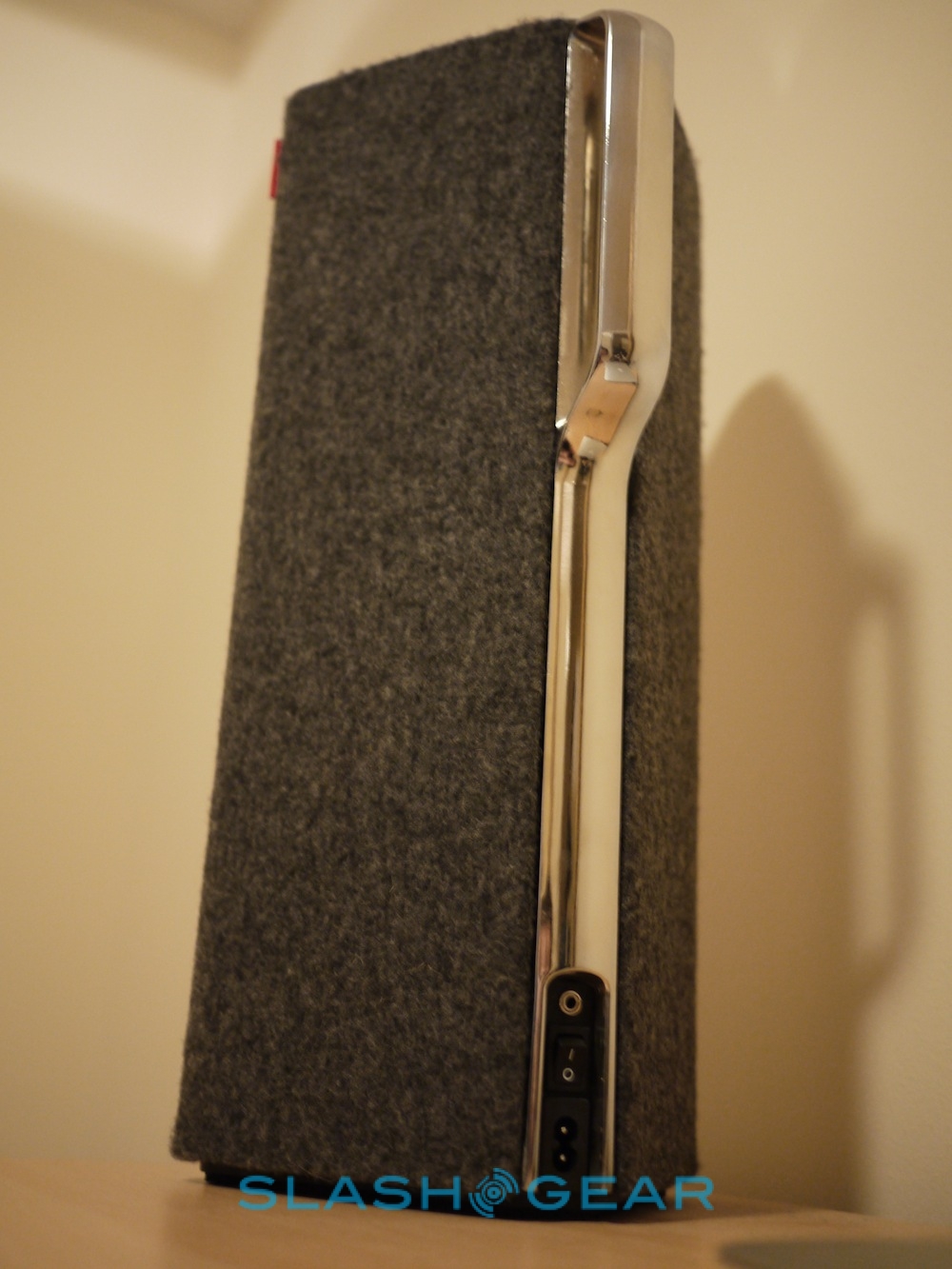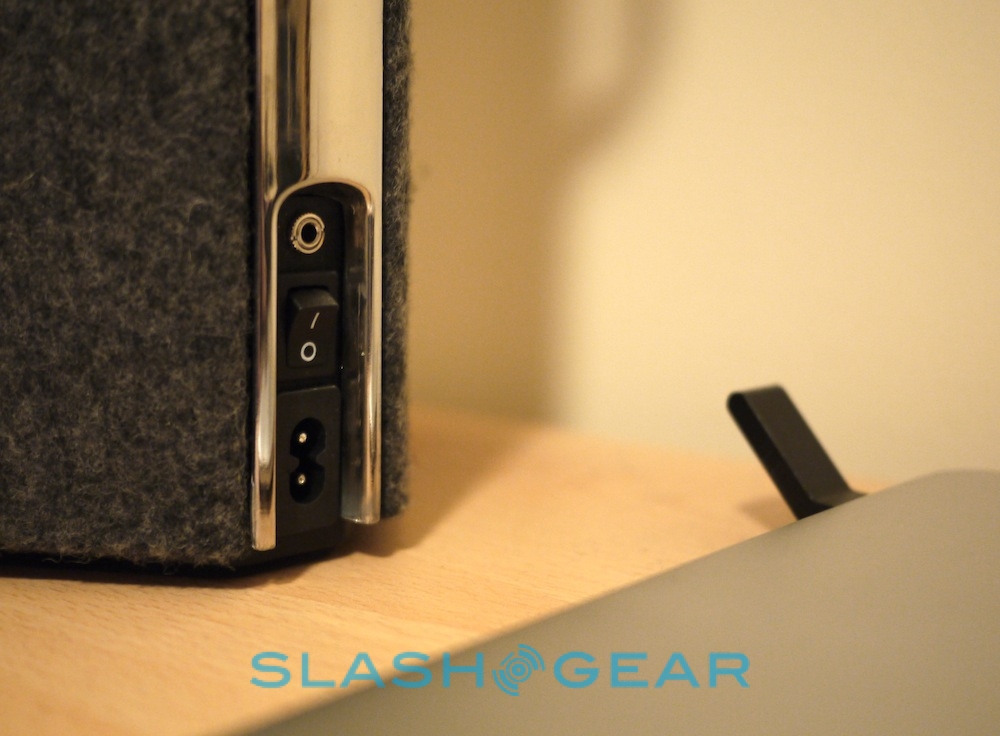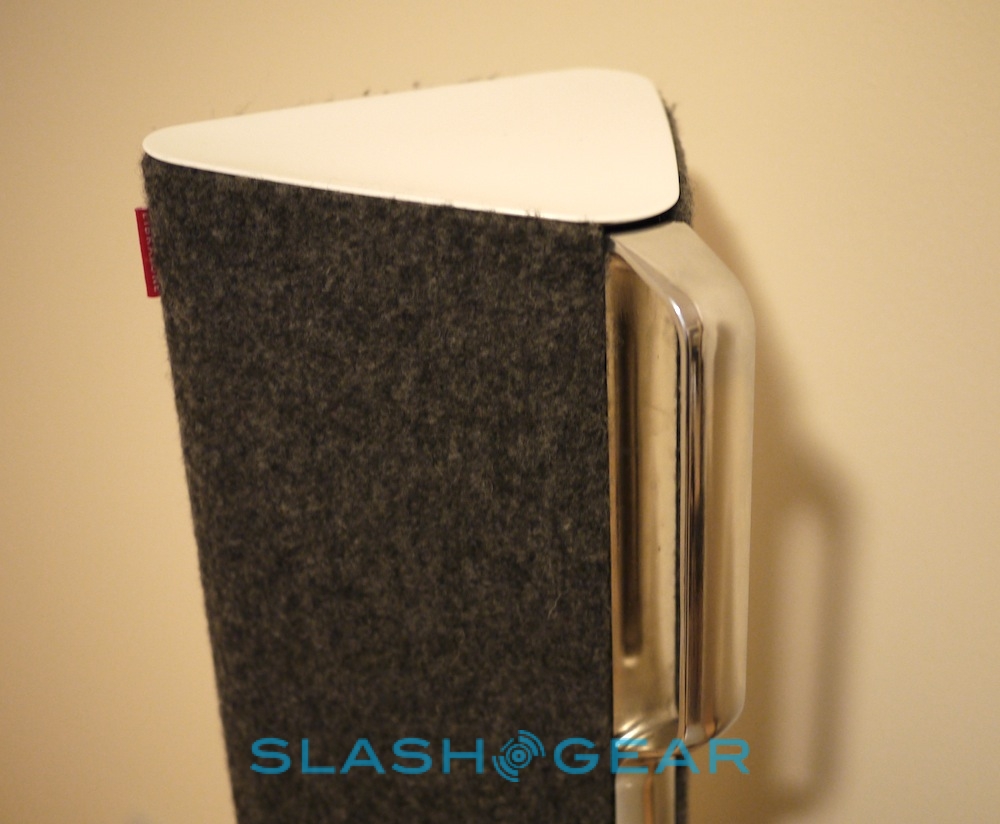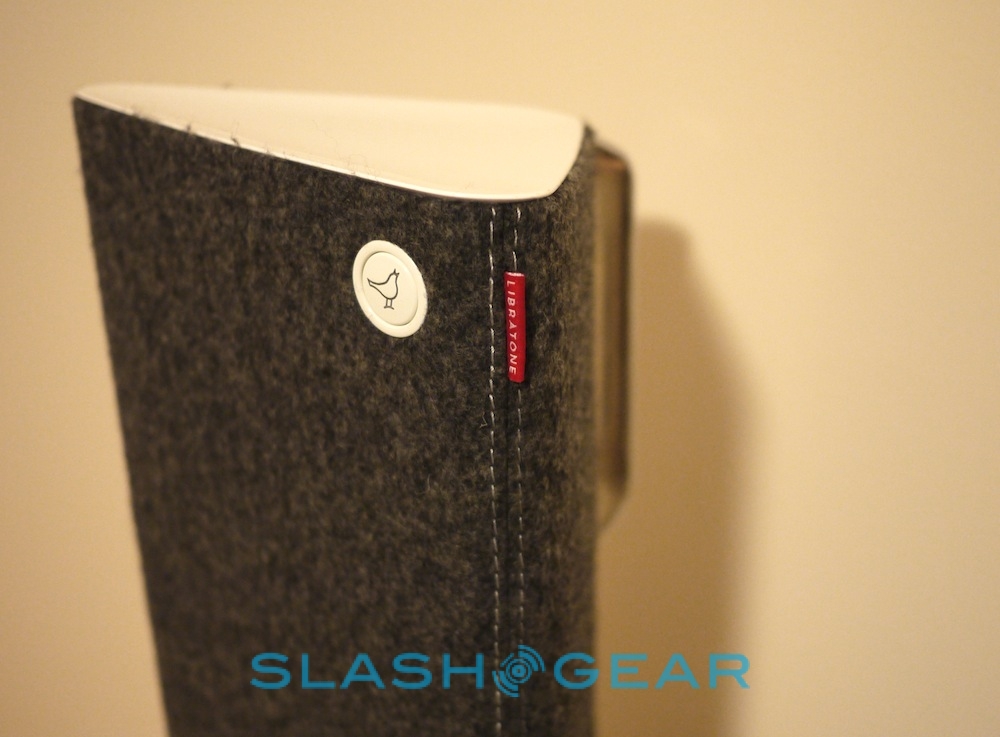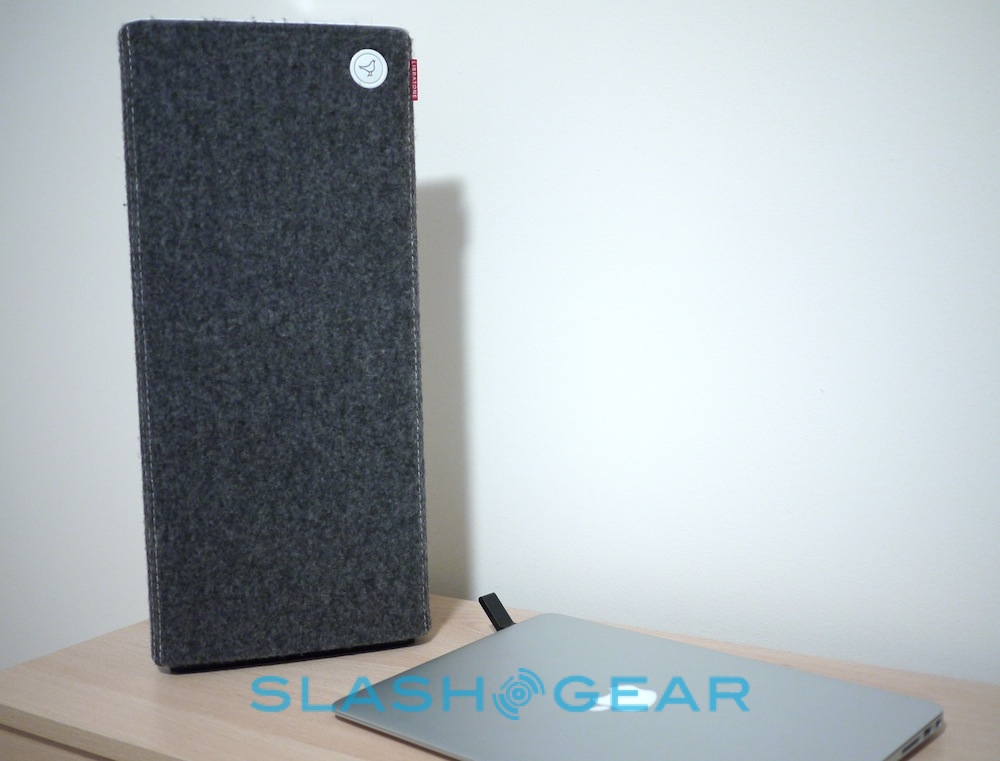Libratone Beat Review
Scandinavian design has built a reputation for its sleek simplicity, with Bang & Olufsen leading a decades-long heritage in appealing home entertainment kit. It's a legacy speaker start-up Libratone would like a part of, and the Beat is the company's first step. A monolithic wireless speaker with a premium finish and premium price-tag to match, Libratone promises something that's both easy on the eye and easy to use. Check out how it fares in the full SlashGear review.
Hardware
The Beat is certainly distinctive: a 47cm high tower, triangular in cross-section, predominantly clad in slate grey Italian wool. On the back there's a slice of satin chrome which arches out into a handle for easier transportation. Build quality is very high, but our review unit was already showing some fluffiness around the edges of the wool where it had obviously been rubbed. Nothing some pruning with nail-scissors wouldn't take care of, but we're not really used to having to trim our home audio equipment.
Ports on the Beat are minimal, with a 3.5mm stereo input intended for legacy use, but Libratone expecting users to opt for one of the two bundled wireless adapters. There's a USB adapter – a tiny, angled USB dongle that shows up in Windows or OS X as another sound output – together with an Apple-friendly transmitter that plugs into the dock connector of your iPhone, iPod or iPad. As a rather slick consideration, Libratone also throw in a custom USB cable which can dock with the iPod adapter, allowing you to recharge and sync the iOS device while also streaming wirelessly. The only thing you don't get is a 3.5mm audio cable for use with a non-Apple PMP.
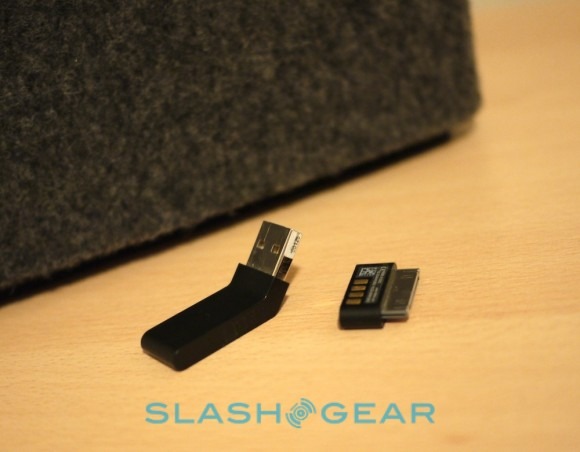
The streaming part of the Libratone Beat may be wireless, but the speaker itself doesn't cut all of the cords. Despite the weight, there's no internal battery for standalone use, and so you'll need to find a plug to power the Beat up. A dedicated power switch on the back is one of two physical controls; the other is an illuminated multifunction button in the top right hand corner of the speaker's fascia. It's a single less-than-solid point on the Beat, being a little wobbly to the touch.
Pressing the button once switches between the wireless transmitters – that way you can leave the USB and iPod dongles plugged in, and switch between them from the speaker itself – while pressing twice triggers a scan for any new nearby transmitters. Three times mutes the speaker – actual volume control is via the transmitting device itself – and six times clears everything. The button's backlighting switches from red when in standby, to yellow when searching/connecting, and then to white while it's playing.
Performance
Libratone is particularly proud of the audio tech slotted inside the Beat, with a 50W bass amplifier and 2x25W tweeter/midrange amps driving a 5-inch bass speaker, two 3-inch midrange and two 1-inch ribbon-based tweeters. Rather than all pointing out the front of the Beat, they're spread around the three edges; Libratone calls this FullRoom, and suggests the speaker sounds best if you position it 20cm away from a wall so that the rear-facing cones can reflect sound off of it. Corners, apparently, aren't so helpful to the stereo effect.
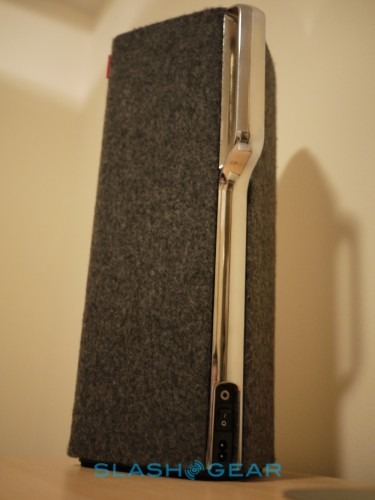
The promise is 360-degree audio from a single source, something plenty of other companies have offered before, and as is usually the case it's a mixed bag in practice. The Beat certainly doesn't lack bass – in fact at times we wished we could tweak the low-end down somewhat, something you have to do via whatever EQ options are on your audio source, since there's no way of doing it on the Libratone speaker itself – with the weighty unit getting the floor shivering with the amount of sound it can pump out, while the trebles are bright and clear. The mid-range gets somewhat lost in the process, however, taking its toll on guitars and acoustic music especially.
It's also hard to identify the promised stereo effect, and while we tried the Beat in various different positions in different rooms, there's really no way it can live up to a proper set of stereo speakers. That might not be an issue if your wireless speaker requirements run to a simple way to take music around the house with you, or out into the garden, but then the Beat's high price tag and AC demands rear their heads.
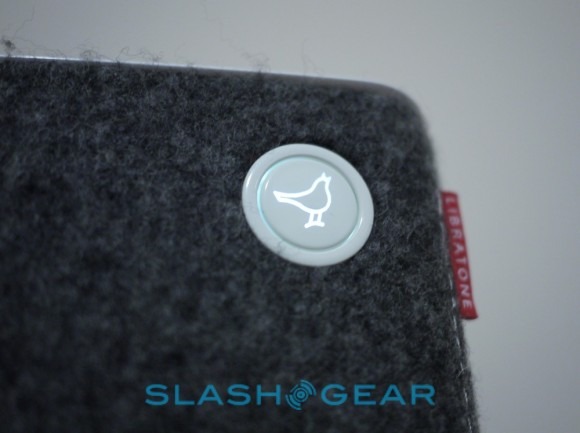
What you do get is convenience. Libratone promise that those with more than one Beat unit can have them all active and paired simultaneously, with the speakers automatically starting playback when you come into range. If you've ever wanted a bubble of whole-house audio that follows you around, the Beat can deliver that, assuming you've the depth of wallet to accommodate. Unfortunately Libratone only supplied a single unit, so we were unable to test the multi-speaker functionality. Still, it's worth noting that, even if you have two units set up, there's no way to assign one to the left stereo channel and the other to the right. You merely get a louder version of the proprietary FullRoom effect.
Wireless range is quoted at up to 10m for the iPod adapter and up to 30m for the USB adapter. In practice, we had no trouble roaming throughout the apartment while maintaining a connection, with walls in-between.
Wrap-Up
There's a lot to like about the Libratone Beat. The styling has the minimalist sparkle we've grown to expect from the Danes, and the focus on high-quality materials – multifunction button wobbles aside – adds up to a speaker that's distinctive even when it's turned off. If Italian wool isn't luxe enough for you, Libratone will sell you a Beat clad in Italian cashmere instead; this is a speaker that dresses better than we do.
The wireless setup is super-simple as well; Windows and the iOS devices we tested automatically switched over to the Libratone adapters, while a quick click in the OS X settings page had our MacBook singing through the Beat. Subsequent plug-ins of the transmitters triggered an automatic switchover, the Beat automatically pairing and hardly a skipped note in the transition between onboard speakers and the Libratone monolith.
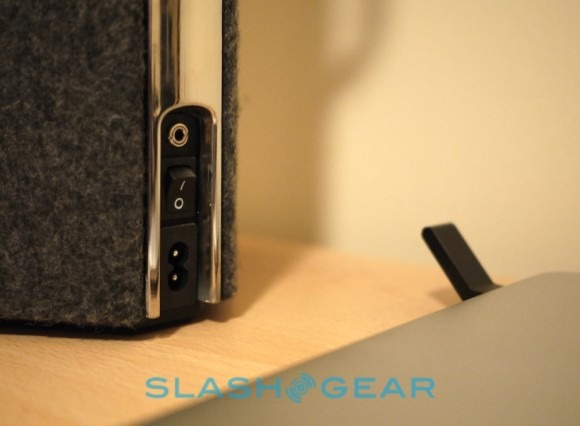
Unfortunately, that convenience and quality comes at a price, and it's both on your wallet and your ears. At £549 for the wool and £599 for the cashmere versions, the Beat is tremendously expensive for an iPod speaker, and the audio output simply isn't as precise as a traditional stereo speaker pair. In its favor there's the convenience of its portability, but the absence of a battery option – and the sheer weight of the unit itself – somewhat undermines the flexibility on offer.
Nonetheless, there's something appealing about the Beat. The ease of use and obvious consideration behind the design decisions are excellent, and we love the styling. If it were cheaper, we could probably describe the sound as playful and be thankful for the lashings of bass from a relatively small cabinet. At its current pricing, however, it's hard to recommend the Libratone Beat to those who prioritize audio quality.

